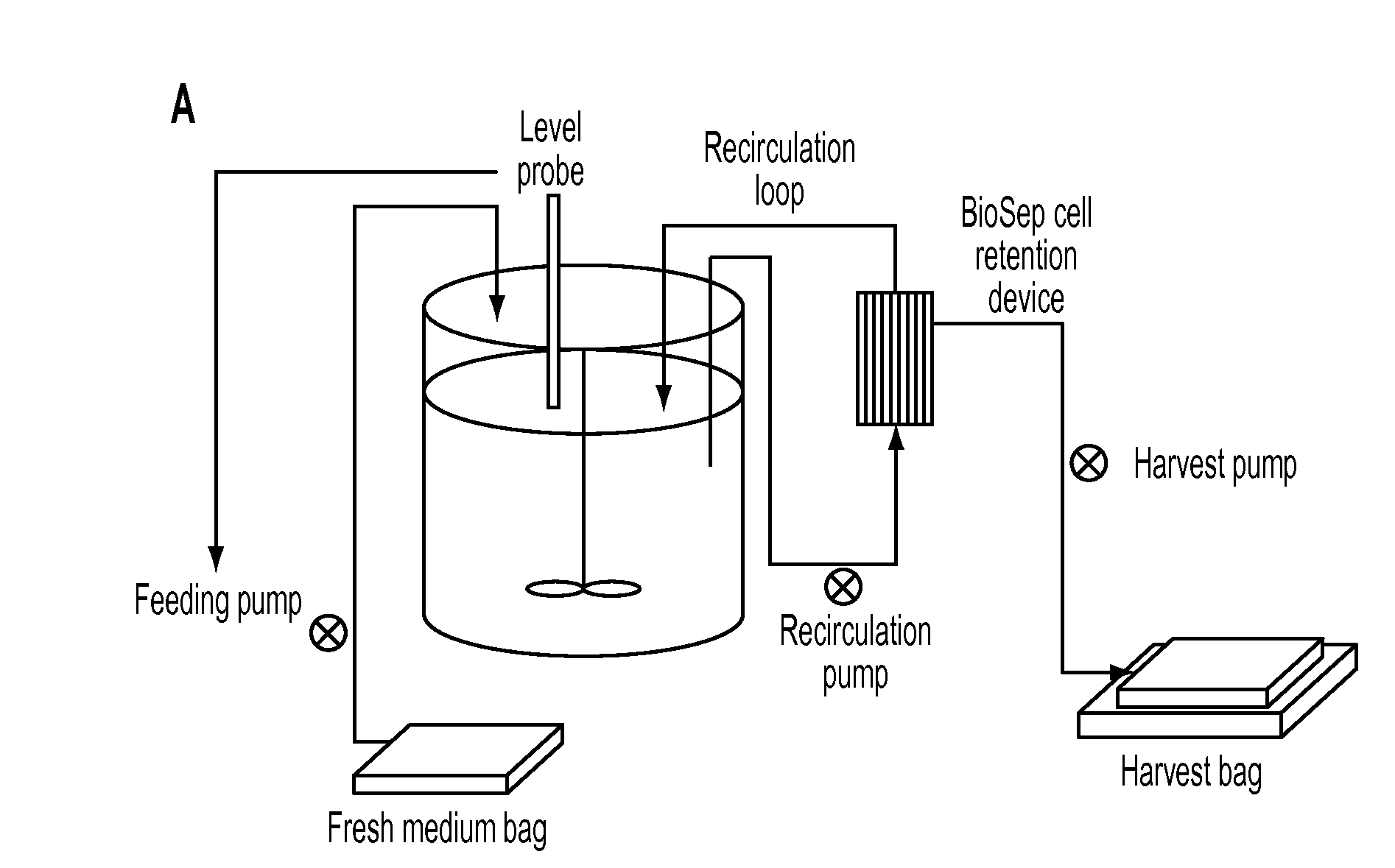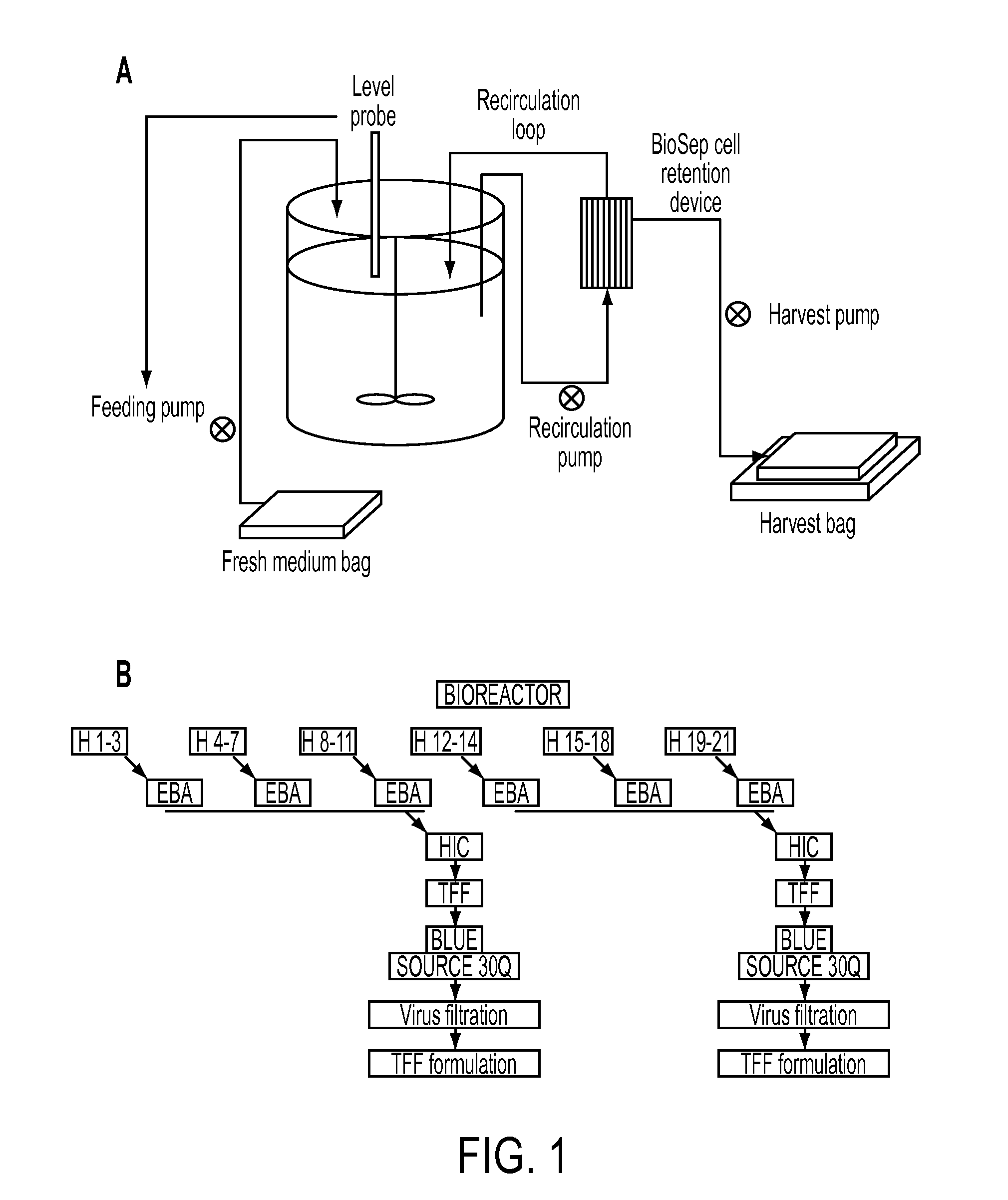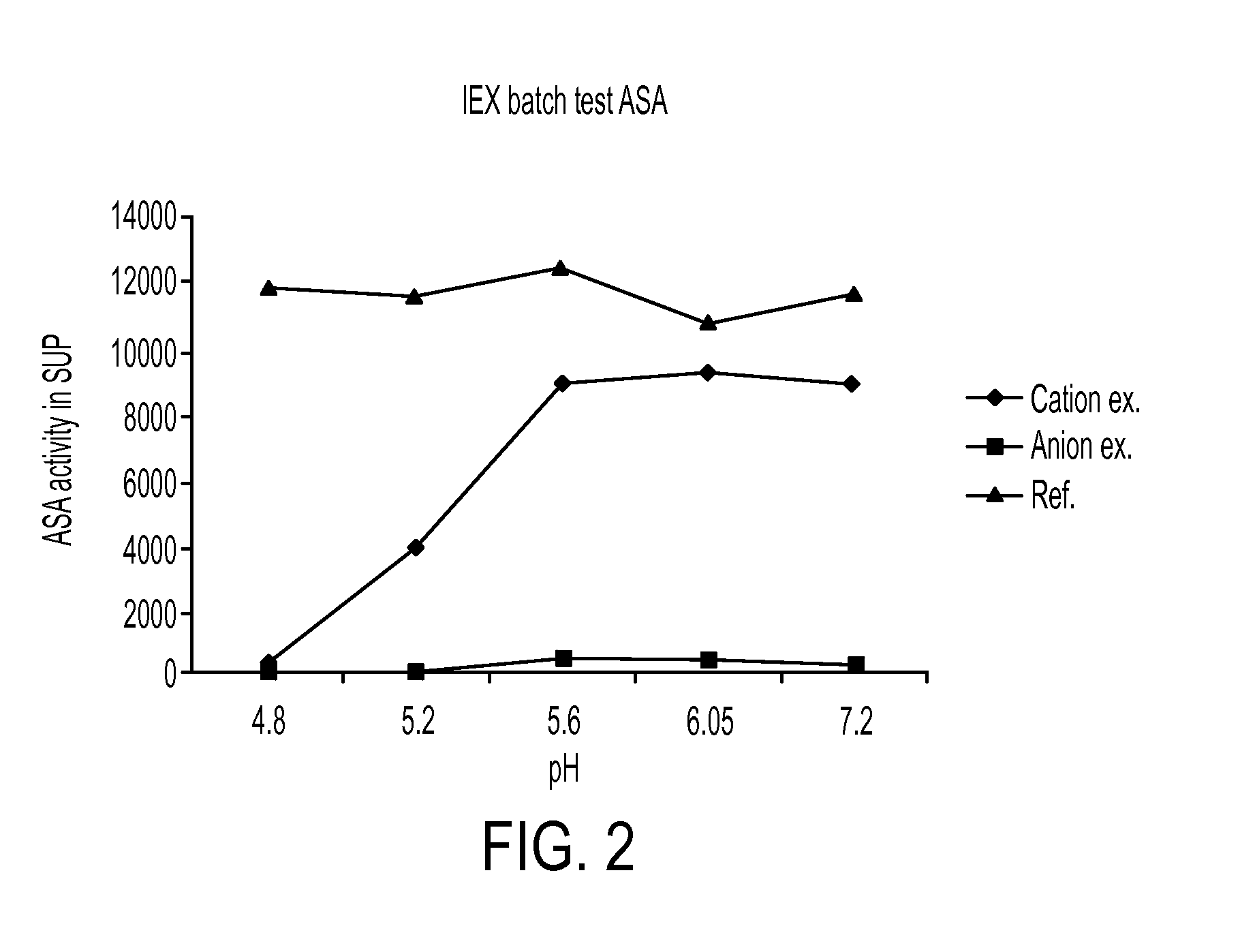Production and purification of recombinant arylsulftase
a technology of arylsulfatase and purification process, which is applied in the direction of drug composition, peptide/protein ingredients, muscle disorder, etc., can solve the problems of no longer conducting nerve impulses to muscles, skin and internal organs, degradation of myelin, and excessive excretion, so as to facilitate tight control of production parameters, increase the expression level and yield of recombinant protein, and facilitate the effect of tight control
- Summary
- Abstract
- Description
- Claims
- Application Information
AI Technical Summary
Benefits of technology
Problems solved by technology
Method used
Image
Examples
example 1
Continuous Cell Propagation
[0258]A continuous cell propagation system and a small to medium size purification process for rhASA in 200-400 ml column scale intended for scale-up to large-scale production (column scale >2 L) is developed. A schematic representation of the system is given in FIG. 1. The quality and purity of the final product (rhASA) is very high and suitable for toxicology testing (including steps 1-4+7) and finally also suitable for clinical trials (including all steps described). As described above, the process will include a capture step, 1-2 intermediate purification steps, 1 polishing step, 1-2 virus removal steps and 1 formulation step. 1 or more buffer exchange steps will also be included.
Experimental Design:
[0259]Several different chromatography gels are tested and performance of the different steps (with respect to removal of contaminants, yield and purity) are analysed with a battery of analytical methods described briefly below.
Analytical Methods
[0260]Enzym...
example 2
Test of rhASA for Binding to Cation Exchange Resin and Anion Exchange Resin
Experimental Description
[0445]rhASA (Tox03HC20) 5 mg / ml was mixed 1:10 with buffers at pH 4.8-7.2 Kation exchanger (Unosphere-S, BioRad)+Anionexchanger (DEAE FF, Amhersam Biotech) was portioned in test tubes and equilibrated with 20 mM Na-Acetate pH 4.8, 5.2, 5.6 and 6.05 or 20 mM Tris-HCl pH 7.2. (approx. 100 ul IEX media / tube). 170 ul rhASA 1:10 in resp. buffer was added to the IEX media with the same pH + to empty reference tubes. Mix several times and let sit for approx. 30 minutes. Spin down and measure activity in Supernatant.
Conclusion:
[0446]rhASA binds as expected to the cation exchanger, but not to the anionexchanger. Even at pH 4.8 rhASA binds strongly and unexpected to the resin. This binding may be explained by strong polarity or alternatively by a change from dimer to octamer below pH 5.8, which induces changes in exposed charged groups. Results are shown in FIG. 2.
example 3
Degradation of Natural Sulfatides in Fibroblasts by rhASA
Dose / Response Experiment:
Experimental Design
[0447]Fibroblasts from a MLD patient with null-mutation (GM00243, purchased from Coriell Cell Repository, USA) are grown almost to confluency in 25 cm2 flasks with medium containing heat-inactivated fetal calf serum (FCS). Cells are loaded with the natural substrate, 14C-palmitoyl sulfatide (15 μM). Following incubation for 40 h the medium is changed to rhASA containing medium (0, 25, 50 and 100 mU / ml affinity-purified rhASA, respectively). After 24 h the cells are harvested and lipid extracts are prepared from the cells by a chloroform-methanol extraction. The lipid fractions are analysed by TLC-chromatography by comparing to radioactively labelled references. The TLC plate is exposed to X-ray film and the different lipid fractions from the TLC plate are quantified using liquid scintillation counting. The data is expressed as percent of radioactivity of remaining and metabolised sul...
PUM
 Login to View More
Login to View More Abstract
Description
Claims
Application Information
 Login to View More
Login to View More - R&D
- Intellectual Property
- Life Sciences
- Materials
- Tech Scout
- Unparalleled Data Quality
- Higher Quality Content
- 60% Fewer Hallucinations
Browse by: Latest US Patents, China's latest patents, Technical Efficacy Thesaurus, Application Domain, Technology Topic, Popular Technical Reports.
© 2025 PatSnap. All rights reserved.Legal|Privacy policy|Modern Slavery Act Transparency Statement|Sitemap|About US| Contact US: help@patsnap.com



